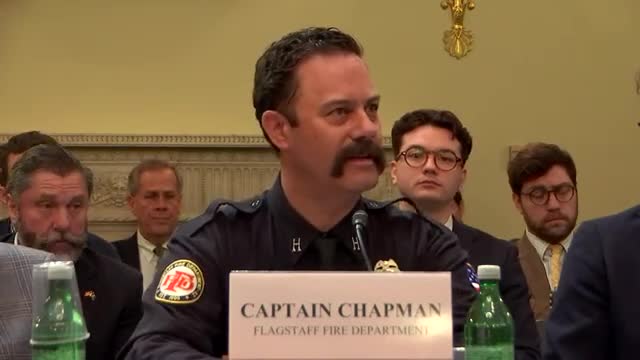Flagstaff Collaborates on Wildfire Risk Reduction and Economic Benefits of Treatments
May 16, 2025 | Natural Resources: House Committee, Standing Committees - House & Senate, Congressional Hearings Compilation
This article was created by AI summarizing key points discussed. AI makes mistakes, so for full details and context, please refer to the video of the full meeting. Please report any errors so we can fix them. Report an error »

In a recent oversight hearing held by the U.S. House Committee on Natural Resources, discussions centered on wildfire risk reduction strategies in Northern Arizona, particularly around Flagstaff. The meeting highlighted the collaborative efforts between local, state, and federal agencies aimed at transforming potentially devastating wildfires into manageable incidents through proactive measures.
One of the key points raised was the effectiveness of fuel treatments in the region. Officials noted that these treatments, which involve managing forest undergrowth and vegetation, have significantly reduced the severity of wildfires. The collaborative process established in Flagstaff has allowed for a network of monitoring systems, including a robust camera network developed in partnership with Arizona Public Service, to enhance community risk reduction efforts. This proactive approach has been credited with turning bad fire situations into minor incidents that often go unnoticed by the public.
The financial implications of these wildfire risk reduction efforts were also a focal point of the discussion. Research from the Ecological Restoration Institute at Northern Arizona University indicated that for every dollar invested in wildfire risk reduction, there is an estimated return of $7. This statistic underscores the importance of funding these initiatives, as they not only protect communities but also save taxpayer dollars in the long run. For instance, preventing a catastrophic fire that could cost millions can be achieved through relatively modest investments in forest management.
However, challenges remain, particularly in attracting private investment for fire mitigation efforts. Stakeholders expressed concerns that the Forest Service's short lease terms deter potential investors from committing to long-term restoration projects. The need for longer contracts was emphasized as a crucial factor in enabling private companies to invest in the necessary infrastructure and resources for effective fire management.
As the meeting concluded, the emphasis on collaboration and strategic investment in wildfire risk reduction painted a hopeful picture for the future of forest management in Northern Arizona. The ongoing efforts to balance ecological health with community safety reflect a growing recognition of the importance of proactive measures in the face of increasing wildfire risks.
One of the key points raised was the effectiveness of fuel treatments in the region. Officials noted that these treatments, which involve managing forest undergrowth and vegetation, have significantly reduced the severity of wildfires. The collaborative process established in Flagstaff has allowed for a network of monitoring systems, including a robust camera network developed in partnership with Arizona Public Service, to enhance community risk reduction efforts. This proactive approach has been credited with turning bad fire situations into minor incidents that often go unnoticed by the public.
The financial implications of these wildfire risk reduction efforts were also a focal point of the discussion. Research from the Ecological Restoration Institute at Northern Arizona University indicated that for every dollar invested in wildfire risk reduction, there is an estimated return of $7. This statistic underscores the importance of funding these initiatives, as they not only protect communities but also save taxpayer dollars in the long run. For instance, preventing a catastrophic fire that could cost millions can be achieved through relatively modest investments in forest management.
However, challenges remain, particularly in attracting private investment for fire mitigation efforts. Stakeholders expressed concerns that the Forest Service's short lease terms deter potential investors from committing to long-term restoration projects. The need for longer contracts was emphasized as a crucial factor in enabling private companies to invest in the necessary infrastructure and resources for effective fire management.
As the meeting concluded, the emphasis on collaboration and strategic investment in wildfire risk reduction painted a hopeful picture for the future of forest management in Northern Arizona. The ongoing efforts to balance ecological health with community safety reflect a growing recognition of the importance of proactive measures in the face of increasing wildfire risks.
View full meeting
This article is based on a recent meeting—watch the full video and explore the complete transcript for deeper insights into the discussion.
View full meeting